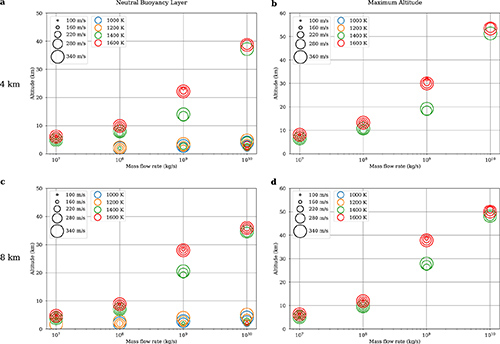Eruption column modeling of explosive volcanism on Venus

Lefèvre M., M. Cerminara, A. Costa, (2025).
JGR Planets. https://doi.org/10.1029/2025JE009320
Abstract
Volcanism on Venus has never been directly observed, but several measurements indicate present-day activity. Volcanism could potentially play a role in climatic processes on Venus, especially in the sulfur cycle like on Earth. Observation of volcanic activity is the primary objective of future Venus spacecraft. However, there are many unknowns regarding its Venusian characteristics, like the condition at the vent, the volatile content and composition. Past modeling efforts have only studied explosive volcanic plume propagation over a limited range of flow parameters at the vent and in an idealized Venus atmospheric configuration. We propose to use the 1D FPLUME volcanic plume model in a realistic Venusian environment. In similar Venusian conditions, the height of the plume is consistent with past modeling. The present study shows that explosive volcanism would preferably reach 15 km of altitude. Under certain conditions, plumes are able to reach the VenSpec-H tropospheric altitude range of observations and even the 45 km cloud floor. For the first time, the impact of wind was quantified, and the super-rotating winds have a substantial impact by plume-bending of reducing the height of plumes. Contrary to the Earth, the atmospheric heat capacity depends greatly on temperature, and will disadvantage lower plumes and allow larger plumes to propagate at higher altitudes. The high latitude atmospheric environment, due to the thermal profile and weaker winds, is favorable to plumes reaching higher altitudes.



Devi effettuare l'accesso per postare un commento.